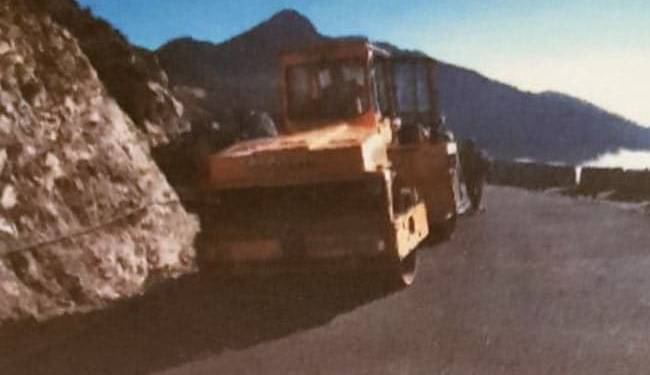India’s border infrastructure which was completely ignored during the 10 year UPA rule had created many difficulties for the Indian Army which made it ill-prepared to fight a two-front war as India’s borders have a difficult terrain and the connectivity remains a pressing issue. The issue came to the fore when the Chinese Army true to its characteristics intruded at the trijunction of Doklam. The Indian Army was subsequently forced to send its troops to counter the Chinese aggression which led to a 73-day military standoff between China and India. While India was able to give a fitting response to China and the issue was resolved through diplomatic channels, India’s poor border infrastructure was exposed as back then, there was only a single road connecting Doklam to India and it took over 7 hours for the army to reach Doklam. The Modi government has now built an alternative road connecting India to the trijunction which will now cut the travel time to Doklam from over 7 hours to just 40 minutes.
The alternative road will enable access to the area through two points, easing the logistic difficulties, reducing time and making the process of deployment smoother and facilitate inter-valley troops transfer and reinforcement. The alternative road is just one of the many roads being built by the Border Roads Organisation (BRO). The BRO is building 61 strategic roads spanning 3,346 kilometres along the crucial India-China border. The roads are being built at a breakneck speed and in fact, 72% of roads i.e over 2,400 kilometres have been already blacktopped making them all-weather roads.
The BRO is also slated to complete the blacktopping of 11 other crucial roads along the India-China border before the end of the year and the blacktopping of another 9 roads will be completed by 2020. The construction of the roads at a rapid pace is aimed to alter the status quo and change the military dynamics in the region. The BRO is constructing roads which include all-weather alternative access into Ladakh, passing through the Rohtang -Koksar- Kelong route into the Zanskar valley and further up into Nimu. This access will reduce travel time for the military by several hours. Three more tunnels — Baralach La, Lachung La, and Tanglang La — are now being constructed. The Rohtang tunnel will be thrown open this December.
China has been trying since long to stake a claim on Arunachal Pradesh and the state has witnessed Chinese aggression in the recent past as the state also grapples with connectivity issues. Hence, in Arunachal Pradesh, the 180 km-long road parallel to the India-China border connecting Passighat to Brahmakund is now complete. Interestingly, Taksin and Tama Chung Chung are linked by the road connecting the Eastern and Western RALP (Rest of Arunachal Pradesh, a military term), saving thousands of kilometres of journey. The BRO has also stepped up its efforts in the West with as the crucial 255 km Durbok-Shyok-Daulat Beg Oldie (DSDBO) road connecting Leh to the northernmost corner of India, which lies a few kilometres south of the critical Karakoram Pass, is now complete and blacktopped. Importantly, all the 40-odd bridges along the DSDBO road have been widened and strengthened to allow heavy vehicles to travel with ease.
The construction of crucial roads has resulted in a significant reduction in time for moving troops, equipment, supplies, and stocks and has reduced by about 40%. The BRO is using technology to construct roads at a faster rate as it has adopted new cementitious- and admixture- based technology — which allow constructing roads faster in colder climates where construction season is smaller and also material doesn’t easily disintegrate, unlike traditional constructions. The new technology has reduced the time taken to construct and blacktop the roads by about one-third.
Incidentally, this development comes amidst the upcoming visit of Chinese Premier Xi Jinping as India is prepared to pay China back in the same coin.






























